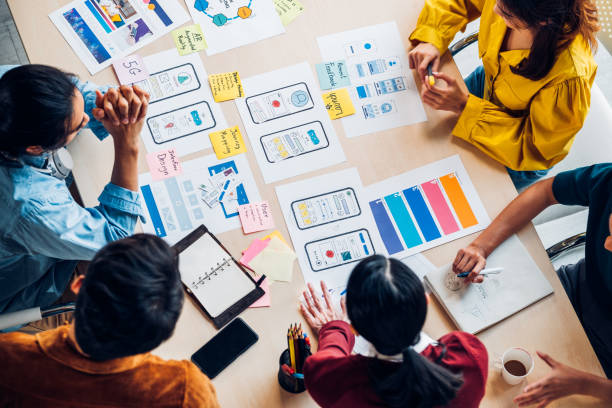Let’s be honest for a second. Most design projects fall apart for one simple reason: people don’t talk to each other enough. Sounds too simple, but it’s true. A designer sits on one side imagining one thing. The client, somewhere else, imagines something totally different. And then everyone’s shocked when the final draft looks… off.
This is exactly why working closely with a graphic design company in Vigo (or anywhere, really) isn’t just a nice idea. It’s essential if you want something that actually fits your business, your style, your goals.
Collaboration isn’t some fluffy buzzword. It’s the backbone of any project that doesn’t end in frustration or four rounds of revisions that go nowhere. And honestly, when clients get involved early and stay involved, the results almost always click. Cleaner. Stronger. More “yes, that’s it.” Let’s break down why.
Why Communication Isn’t Optional
Designers aren’t mind-readers. Some are good at guessing, but guessing still misses the mark half the time. When clients explain what’s in their head—even if it’s messy, unclear, or full of contradictions—that’s when things start moving in the right direction.
A designer might visualize cool shapes, bold typography, some artsy stuff. But maybe the client wants soft, warm colors and a layout that says, “We’re friendly, not intense.” If nobody says that out loud, you end up with a great design… that’s totally wrong. And this is where collaboration works like a compass. It lines everyone up in the same direction. Not perfect, but aligned enough to save hours of confusion.
Design Isn’t Just Visual—It’s Emotional
People forget this constantly. Design isn’t paint-by-number. It’s not choosing fonts that “look nice.” It’s about capturing an emotion and turning it into something you can see. A feeling you can hand to someone, even if you can’t explain it perfectly.
A client always knows their emotion. Designers know how to shape it.
Put those two together and the work gets sharper. Deeper. More honest.
Sometimes a client says, “I don’t like it, but I don’t know why.” And a designer, if they actually listen, can figure out the reason hiding under that sentence. But if the client doesn’t speak? Or the designer doesn’t ask? You get a stale design that feels store-bought, not custom.
Where Collaboration Really Shows Up in Projects
1. The Briefing Stage (A Make-or-Break Moment)
If you rush the brief, everything falls apart later. Happens constantly.
A solid back-and-forth during the briefing stage avoids the usual disaster where both sides pretend to understand each other but don’t.
A collaborative brief gets messy. Notes everywhere. Half-formed ideas. And that’s fine. It’s supposed to be messy. Creativity lives in the mess.
2. The Middle Phase—Where Things Get Real
This is usually where the misunderstandings pop up. Right when designers start showing drafts. Right when clients realize what they asked for looks different outside their imagination.
This is literally the best time to talk more, not less.
And if you’re dealing with web design in Vigo, the middle phase is where technical details show up too—user flow, mobile layout issues, weird spacing, the usual suspects. If clients disappear at this stage and come back later, the whole thing derails. Fast.
3. Iteration Without Ego
A big part of collaboration is letting go of ego. Designers sometimes get too attached to an idea. Clients sometimes get too stubborn about something that doesn’t work. When both sides loosen their grip a little, you get better solutions.
A tweak here. A small rewrite there. Tiny adjustments add up.
Iteration isn’t a sign that something’s wrong. It’s a sign that both sides care enough to refine it.
Designers Bring Expertise, Clients Bring Context
This combo is unbeatable when people actually respect each other’s lane. Designers understand layout, psychology, color theory, spacing. Clients understand their audience, their competitors, their brand personality.
A design project without client input lacks soul.
A project without designer expertise lacks structure.
But when the two mix, the final result suddenly feels… intentional. Balanced. And way more professional than either side could do alone.
Avoiding the Classic “Last-Minute Surprise”
Everyone hates the big reveal moment when it turns out nothing is what the client expected. Easily preventable. Just… talk. Share drafts. Discuss mini-changes. Make small corrections before they turn into big problems. No dramatic unveil needed.
A collaborative workflow is more like a slow build. Layer by layer. No one gets blindsided.
Why Local Collaboration (Like in Vigo) Hits Different
Working with people who understand the local market makes everything easier. A graphic design company in Vigo knows the style people connect with there. They understand cultural cues. What people respond to. What falls flat.
Same with web design projects. Local designers know the online behavior of the audience in Vigo. How people browse. What irritates them. What keeps them on a page. This local awareness is gold, and it only gets better when clients add their inside knowledge too. It’s collaboration, but with a hometown advantage.
Final Thoughts: Collaboration Isn’t Slower—It’s Smarter
Some people think getting involved in design slows things down. Actually, it speeds the whole thing up. You avoid unnecessary edits. You catch misunderstandings early. You build a design that feels authentic instead of generic.
Clients who collaborate get better work.
Designers who collaborate avoid burnout and confusion.
And together, the whole project just… works.
The Conclusion
If you want a design that stands out, that hits the right emotion, that actually represents your business instead of some template-looking thing—then collaborate. Don’t hover. Don’t micromanage. But be involved. Share thoughts. Ask questions. Send references, even the weird ones.
The best projects aren’t designer-made or client-made. They’re co-made. And that’s exactly why collaboration isn’t optional anymore—it’s the secret ingredient nobody talks about enough.





Comments